
I sat and look out the window as the frames of the landscape go by, a paradise. I thought of our life thickened along these lines, an obsession since the days when I was studying architecture: roads, bridges, rivers, and foreshore.
Sedimented like limpets on the edge of the rock. There was a Middle Eastern family, lost faces, and a few bags in their hands in front of me. Their lives cling to migrant routes. We stopped in Ventimiglia, a beautiful neoclassical station. They went off the train. Here, since 2015, when France changed the access to its territory, the route is interrupted. And it spreads through the streets of the city. I got off too.
The railway continues in an intertwining of lines - the freeway entering from the north, the overpasses and underpasses that mix in unitary chaos. I skirt the railway line and arrive at a railway building now used as a Caritas center. It is nine o'clock, and the slow distribution of food is starting by the Volunteers, the people who move with tenacity, day after day, without illusions.
They walk in the mud of the present, their feet heavy, one step after another. I talk to them, and they listen to me: since the reception center was closed, they have been looking after the migrants who arrive. I started to take some pictures with my analog camera, the tripod as if I was filming a ceremony. I put myself on the other side of the railway - wires, cables, rails, fences, it all stand between me and the world.
This story is from the March 2021 edition of Lens Magazine.
Start your 7-day Magzter GOLD free trial to access thousands of curated premium stories, and 8,500+ magazines and newspapers.
Already a subscriber ? Sign In
This story is from the March 2021 edition of Lens Magazine.
Start your 7-day Magzter GOLD free trial to access thousands of curated premium stories, and 8,500+ magazines and newspapers.
Already a subscriber? Sign In
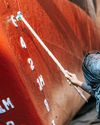
IN THE SHIPYARDS OF DHAKA
A very large shipyard in Dhaka is located on the Buriganga River's banks, directly across Dhaka's old city.
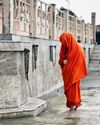
Aga Szydlik INDIA
A JOURNEY INTO THE LAND OF DIVERSITY, CULTURE, AND COLORS

SEBASTIAN PIÓREK EXPLORING Enjoyable LANDSCAPE
I retrieved the idea of nature closely linked to the field of human feelings.
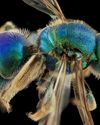
The Extreme Macro Photography of Bees
AN INTERVIEW SAM WITH, DROEGE
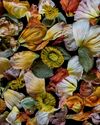
JEAN KAROTKIN GYMNOPEDIES
Gymnopédies, Karotkin's ongoing series of botanical portraits, takes its name from a trio of piano compositions by 19th-century French composer Erik Satie.

BUTTERFLIES IN LOVE WITH FLOWERS
I sometimes think Chinese art is not fully appreciated in the West. I was exposed to it growing up in Australia, although my fascination was more with calligraphy.

Lissa Hahn:
Hahn: HOW TO EVOKE A PAVLOVIAN RESPONSE IN HUMANS

AN EXCLUSIVE INTERVIEW WITH ELENA PARASKEVA
Elena Paraskeva is an internationally acclaimed, award-winning Conceptual Photographer and Art Director and, most recently, an official ADOBE instructor.

From a Living Hell to Heaven on Earth: the Inhumanity and Humanity of Humans
In a remote area of western Wisconsin, dogs and cats who otherwise would have ended up on death row are given a reprieve. They can now live out their lives in peace and comfort and with companionship at Home for Life (HFL), which was not afforded them outside the sanctuary's gates.
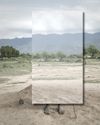
The Art of DISAPPEARING
In the classical proposal, indigenous people are usually the topic of discussion, but rarely do they have a hand in shaping it.